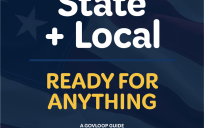So much of the 2.0 part of the web is community in collaboration. One of the emerging questions with this technology and tools is – how does it benefit all Americans or help to reach traditionally underserved populations?
What caught our attention this month is how native communities are using Web 2.0 tools to enhance their presence within national boundaries. It sparked us to ask:
What is being done in the Gov 2.0 space to enhance the visibility of native culture and customs within a broader national scheme?
In Brazil, a site called ÍNDIOS ON-LINE (http://www.indiosonline.org.br/novo/) has the mission to facilitate access to information and communication for different Indian nations, fostering intercultural dialogue. There are seven indigenous nations on the site: Kiriri, Tupinambá, Pataxó-Hãhãhãe, Tumbalalá in Bahia, Xucuru-Kariri, Kariri-Xocó in Alagoas and Pernambuco and Pankararu. This site offers its YouTube Channel, Canal Celulares Indigenas YouTube, and a chat feature available to members upon login. It appears the organization is nationally supported by the Brazilian Ministry of Culture.
Canada’s First Nations are also represented online. There are more than 600 First Nations governments spread across Canada, with the majority being in Ontario and British Columbia. The Assembly of First Nations (www.afn.ca) is the national organization representing First Nations citizens in Canada.They have a YouTube channel and an official Twitter presence – @ AFN_Updates, which at the time of this post has 395 followers, and isn’t following anyone at all. The Twitter stream appears to be broadcast-only, and does not seem to engage in dialogue with constituents.
Here in the United States, the National Congress of American Indians (www.ncai.org) doesn’t appear to utilize Web 2.0 tools at this time, at least according to the website. While there appears not to be an official Twitter feed, @peterlmorris is a self-described NCAI employee in hisTwitter profile, and may be tweeting on behalf of the organization. At the time of this writing, he had 83 followers. There are no links or mentions of YouTube or Facebook participation from the primary site.
The Department of the Interior will maintain a $12B budget this year, some of which is designated for support of Native American communities. One is left to wonder:
Could Web 2.0 collaboration tools play a part of their plan?




This is very interesting, Tanya; thanks. One also wonders, will all communities choose to adopt the same social media tools for the same purposes? I would hope that the people of each would shape and use the tools in whatever ways they find most beneficial.
Good point, Kitty. I think you’re right. I look forward to seeing it all take shape. Brazil’s approach, at first glance, seems to be an awareness campaign. I’m not sure how they’re using it to, say, collaborate among the nations, for example.
Canada is venturing into this 2.0 space as well, so I have to admit, it made our efforts here in the States seem rather…behind.
I want to see us do this in the USA, and do it well- perhaps not just for public affairs purposes, but for functional collaboration within these communities, or even as a mean to streamline service delivery we already provide. There are, undoubtably, connectivity challenges that we face in rural areas. What other ideas might we suggest? Are there examples of Web 2.0 tools being used in these communities that I’ve missed?
I’d like to think it will be worth the wait.
I know that some of the Indian Communities here in the west/midwest are utilizing web 2.0 on their websites.